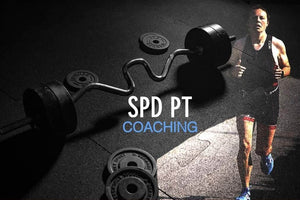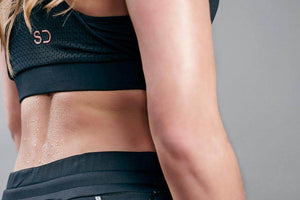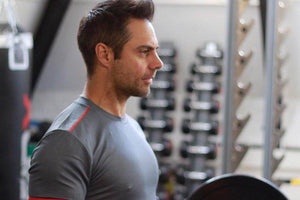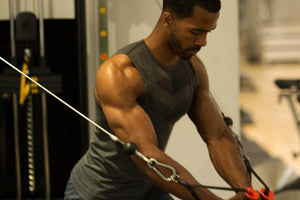
The squat is one of the biggest exercises in fitness. It is a huge compound movement that can help to improve your fitness and strength in a number of ways. But what if you can't squat properly? How can you improve your squat?
Why can't I squat properly?
Squatting is a natural, functional movement that humans have been doing since the dawn of time. When we were young we would squat perfectly and naturally without even thinking about it. Just take a look at a child playing around, they'll drop into a squat and get back up again without a second thought. As we age, we get less and less good at it as we lose mobility and become sedentary in our lifestyle.
If you can't squat properly, it could be due to lifestyle or it could be due to your personal physiology. If you haven't done a squat since you were a child, you can't expect to do one perfectly first time you try. Like everything, exercises take practice, and you should ask an expert or fitness professional to give you guidance the first time you try to squat.
Some people have more reduced mobility than others, which may also affect your squat capabilities. If you have stiff or weak ankles, you will struggle to squat. Again, practice makes perfect, and with the right physio training, you'll be able to do a full, proper squat in no time.
Bodyweight squats
Squats are a compound movement, meaning they use multiple joints and muscles to happen. A simple body weight squat utilises almost every muscle in the body and arguably once weights are added, no muscle gets left behind. It's a good idea to get well acquainted with the body weight squat before you add weight, so that you can be sure you have good form.
How to do a squat
- Begin with feet just outside shoulder width and toes pointing very slightly outward.
- Find a point to focus on looking straight ahead, don’t look down as this will compromise your spine.
- Head up, sink your weight back into your heels and bend your knees.
- Sink your bum down as low as your hips and flexibility allow.
- Your chest should stay upright and your back remains flat, the knees should follow the toes.
- Driving off your heels, straighten back up to the start position.
How to improve your squat
Lack of Range
A lack of range in your squat is usually caused by stiffness, inflexibility or even ankle instability. If your heels lift off the ground towards the bottom of your squat it is likely that you have either tight hamstrings, ankles or both. Stretching the ankles and hamstrings will help to achieve the full squat depth.
Knees collapse inwards
Your knees caving inwards during a squat is a common sign of weak abductors and gluteus medius, although there can be many other reasons as with any imperfection. Exercises which focus on activating these muscles such as lying clamshells, banded squat walks and single leg lunging can help to activate these areas. This being said, there are olympic athletes whose knees collapse inwards as they compete, who clearly don’t suffer from ‘weak’ anything. So it is not the only cause.
Back caves forwards when squatting
A weak posterior chain can lead to bending forward as the lower back attempts to make up for the weakness and ends up pulling you forward. Strengthening the hips, glutes and hamstrings will enable them to engage better and pull your body back to the correct alignment.
Arched back
An arched back when squatting can be caused by a multitude of problems, a weak chest, poor posture, a weak trunk or even simply too great a weight can cause the shoulders to arch, compromising your squat technique. Trying to establish the cause of this imbalance can often be the most difficult task, but then there are simple steps which can be implemented in order to address the issue. A weak chest can be worked on by focusing on exercises such as flyes and pullovers, whilst fully engaging the pecs by forcing the shoulders back. A weak trunk can be improved by working on core strength using exercises such as the plank and hanging leg raises.
The barbell squat
Olympic squat, weighted squats, whatever you want to call it, this is when the squat becomes a game changer and has the greatest effects not only on strength but on weight loss, fitness and body composition. Weight training has a whole article of benefits of it’s own which you can read under “strength training”.
The first battle, do I use a neck wrap or not? To barbell squat you will need an olympic bar, collars and a rack. You will not need: Chalk, lifting gloves or a neck pad for the bar. If you hold the bar correctly you don’t need to use a pad to support your back, that’s what you’ve got traps for. What’s more - wearing a neck brace can damage your proprioception, you need to be able to feel the bar properly for effective balance. Padding makes the bar thicker, moving it upwards which causes a more forward lean and emphasises lower back stress. As your weight lifting gets serious and your strength increases a bar pad won’t be any help anyway. Heavy weights hurt.
Setting up to barbell squat
This is another common trait many will miss, despite the fact they’re in the gym, we can still call these people lazy, as they’re the ones who don’t want to faff with moving the rack to fit them properly, which can lead to poor technique. As someone who is 5 ft 2, I physically HAVE to set the bar up every time, as at most people’s height, I’d be trying to lift it over my head! The bar should be set at a height somewhere between your breast and collar bone. It needs to be low enough that when you stand with knees locked, the bar lifts off the rack, without you going on tip toes. It’s a squat not a calf raise.
Once you’ve set the bar up, it’s time to step under it, place the bar across your shoulders and select your grip. This is another vital piece of the puzzle. Follow these steps:
Step up to bar. Duck under bar. Make sure head is central. For a high placement, the bar sits across the neck, resting on your traps, for heavier weights the bar is usually placed slightly further down, so the weight is more central and therefore less likely to cause damage to the lower back. Keep your hands as close as possible without causing strain, which will flex the upper back and provide “cushioning”. Point your elbows down, straighten your wrists and keep your elbows in.
That’s the setup, so this is the moment where you have a stern word with yourself, big yourself up and then go for it. You should be able to straighten and un-wrack in just two steps, if you have to lift the bar any further out you could put yourself at risk.
The squat technique itself is almost identical to a body weight squat, except now you’ve got a weight on your back. The main factor here is to make sure you keep your head facing forwards rather than looking up, as this will cause compression at the top of your spine.
Once you have the basic squat perfected, the possibilities of where you can take it are endless. In our next post we will look at squat variations, so keep your eyes peeled!









